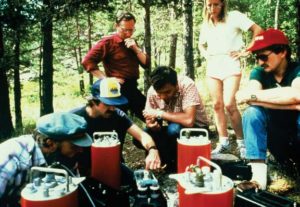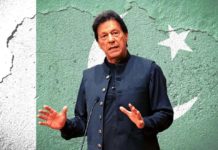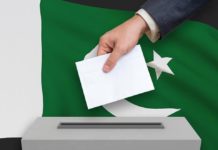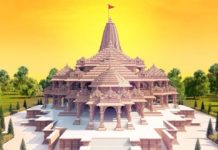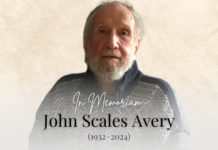J. Robert Oppenheimer was the charismatic physicist who led the World War II project to design the Hiroshima and Nagasaki fission bombs and, after the war, was for five years the US government’s leading technical advisor on nuclear weapons policy. His career as an advisor ended in 1954 after he recommended against developing 1,000-times-more-powerful thermonuclear bombs.
Oppenheimer was re-introduced to the public last year in the eponymous Christopher Nolan film that drew huge worldwide audiences and earned 13 Oscar nominations. He was not, however, the only scientist struggling with foreign policy and security issues once the world realized that nuclear explosives could be made. Many other scientists tried to influence nuclear weapons policy—and some did successfully.
Nuclear arms control
Niels Bohr was 60 in 1945 and second only to Einstein in fame among 20th-century physicists for explaining the energy levels of electrons in atoms, creating the Institute of Theoretical Physics in Copenhagen to which young physicists flocked from all over Europe to develop the new quantum mechanics, and then explaining nuclear fission.
After Bohr escaped from Nazi-occupied Denmark in 1943, he was invited to visit Los Alamos, where he learned that the United States was well on its way to making fission bombs.
He focused immediately on the dangerous nuclear arms race that would result once the Soviet Union had the bomb. As was his wont, he engaged colleagues in prolonged, deep discussions which resulted in his concerns and ideas spreading among the physicists in the project. (In 1964, two years after Bohr’s death, Oppenheimer would record a magnificent appreciation of the impact of Bohr’s concerns.)[1]

In the summer of 1944, admirers obtained meetings for Bohr with both Prime Minister Winston Churchill and President Franklin D. Roosevelt. In a memo written for Roosevelt, Bohr summarized his proposal:
“Bohr ought to be confined or at any rate made to see that he is very near the edge of mortal crimes.”
—Winston Churchill
“[T]he terrifying prospect of a future competition between nations about a weapon of such formidable character can only be avoided through a universal agreement in true confidence [and] will therefore demand such concessions regarding exchange of information and openness about industrial efforts, including military preparations, as would hardly be conceivable unless all partners were assured of a compensating guarantee of common security against dangers of unprecedented acuteness… Personal connections between scientists of different nations might … offer means of establishing preliminary and unofficial contact.”[2]
Roosevelt expressed interest in Bohr’s idea of talking with Stalin about the bomb, but Churchill vetoed it. The British prime minister was particularly irate at Bohr’s suggestion that the basis for such a discussion could be laid by communications among Western and Soviet scientists. Fearing Bohr might leak nuclear secrets to the Soviet Union, Churchill told his science advisor, “Bohr ought to be confined or at any rate made to see that he is very near the edge of mortal crimes.”[3]
The following year, Bohr’s efforts were picked up by a group of scientists at the Manhattan Project’s Metallurgical Laboratory (also known as the “Met Lab”) at the University of Chicago, where the US plutonium-production reactors were designed.
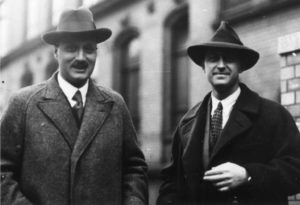
In May 1945, as the decision to use nuclear bombs on Japan was being finalized, Arthur Compton, director of the Met Lab, allowed James Franck, 63, to organize a study of the “social and political implications” of nuclear bombs. Franck, a German refugee, had been sensitized to the social responsibility of scientists, in part by Bohr, after allowing himself to be recruited into Germany’s World War I poison gas program.
The co-authors of the resulting “Franck Report”[4] included the irrepressible genius, Leo Szilard, inventor of the nuclear chain reaction and co-designer with Enrico Fermi of the first nuclear reactor; Franck’s research collaborator, Eugene Rabinowitch, later founding editor of the Bulletin of the Atomic Scientists; and chemist Glenn Seaborg, 33, co-discoverer of plutonium and other “transuranic” elements (artificial elements heavier than uranium), and later, during the 1960s, chairman of the US Atomic Energy Commission.
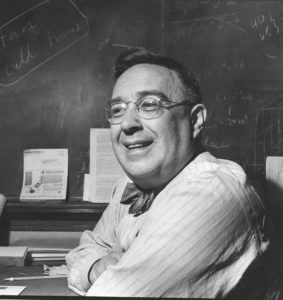
The Franck Report argued for not bombing Japanese cities, assessing that a post-war nuclear arms race with the Soviet Union would be inevitable if the United States were to use nuclear bombs in a surprise attack on Japan. It urged instead that the atomic bomb be demonstrated to representatives of the United Nations, which had just had its founding meeting in San Francisco in April 1945, and that the UN be consulted on its use.
President Roosevelt had just died and the report went to the “Interim Committee” chaired by Secretary of War Henry Stimson, who asked Oppenheimer, Compton, Fermi, and Ernest Lawrence (head of Berkeley’s Radiation Laboratory) whether any demonstration of nuclear weapons could be as effective in convincing Japan to surrender as bombing Japanese cities. The four reported back, “We can propose no technical demonstration likely to bring an end to the war; we see no acceptable alternative to direct military use.”[5]
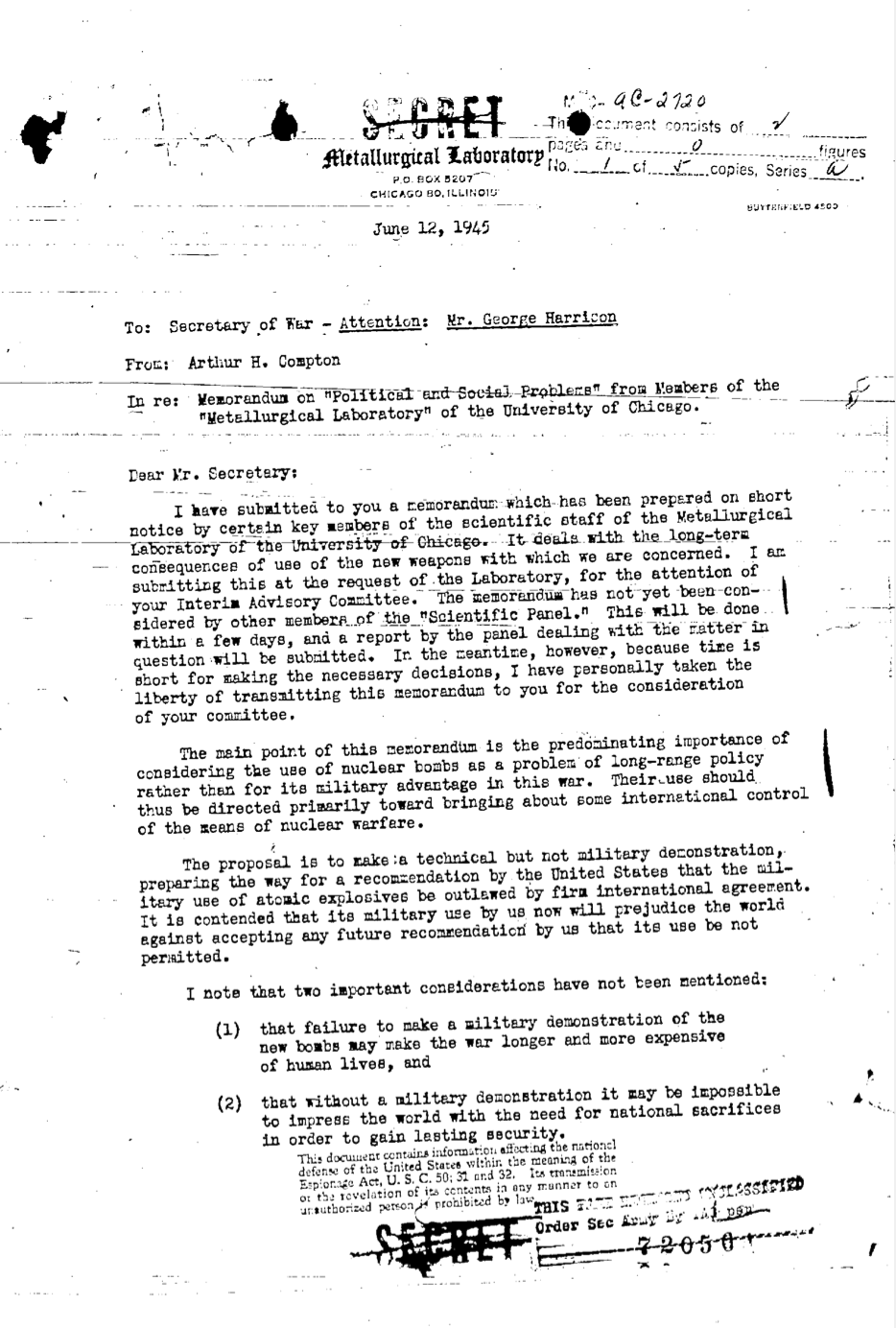
The Interim Committee’s formulation of the question ignored, however, the lesson the Soviet Union would draw from a secret US-UK decision to use nuclear bombs in a surprise attack on an enemy.
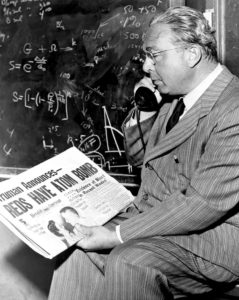
Stalin had launched a nuclear-weapons development program in 1943, based on intelligence about the US-UK nuclear-weapons program. After the bombing of Hiroshima, however, Stalin gave the Soviet nuclear-weapons program a priority similar to that the United States had given when it was driven by fear of a Nazi nuclear bomb. Stalin reportedly told the leaders of his nuclear program, “Hiroshima has shaken the whole world. The balance has been destroyed!”[6]
Bohr’s concerns were correct.
International brainstorming
Joseph Rotblat was a Polish physicist on a fellowship in the United Kingdom when Hitler’s army invaded Poland. Rotblat had already carried out an experiment in Poland that demonstrated the possibility of a chain reaction in uranium. In the United Kingdom, Rotblat helped start the British nuclear-weapon program and then joined Los Alamos when the British effort was folded into the US nuclear-weapon program.
Like the other refugee physicists from Europe, Rotblat acted out of fear that the Nazis might be the first to get nuclear bombs.
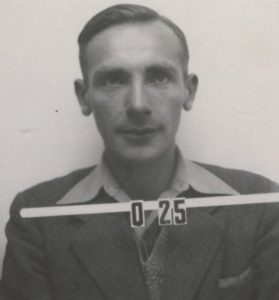
In 1944, after US intelligence had concluded that the Nazis never had a serious nuclear-weapons project, according to Rotblat, General Groves told a dinner group at Los Alamos that the new rationale for the US nuclear project was to “subdue” the Soviet Union. Rotblat decided to leave.[7]
After his return to the United Kingdom, Rotblat pioneered the use of ionizing radiation to treat cancer. He also worked with Bertrand Russell, the British philosopher, mathematician, and public intellectual, to recruit eminent international scientists to endorse a manifesto Russell had written calling on scientists from around the world to “assemble in conference to appraise the perils that have arisen as a result of the development of weapons of mass destruction, and to discuss a resolution.”[8] Albert Einstein’s endorsement of Russell’s manifesto was his last public act before his death in 1955, and it became known as the “Russell-Einstein Manifesto.”
“We have to learn to think in a new way.”
—from the Russell-Einstein manifesto
Rotblat became the first secretary general of the Pugwash Conferences on Science and World Affairs, named after the village in Nova Scotia where the first meeting was held in 1957 to discuss how to reduce the danger of nuclear war. Through the 1980s, Pugwash working groups developed the technical bases for nuclear and also chemical, biological, and conventional arms control agreements. Rotblat and Pugwash shared the 1995 Nobel Peace Prize “for their efforts to diminish the part played by nuclear arms in international politics and, in the longer run, to eliminate such arms.”
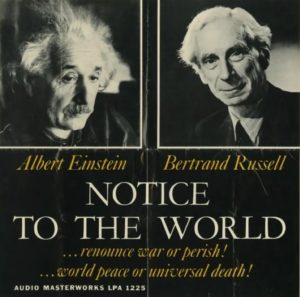
Mikhail Gorbachev’s policies of “glasnost” (openness) and “common security” owed an intellectual debt to Bohr and Pugwash. The circle around Gorbachev who advocated for the new approach to foreign and security policy called it the “new thinking”—inspired, according to Gorbachev’s reformist foreign minister, Eduard Shevardnadze,[9] by the lines in the Russell-Einstein manifesto:
“We have to learn to think in a new way. We have to learn to ask ourselves, not what steps can be taken to give military victory to whatever group we prefer, for there no longer are such steps; the question we have to ask ourselves is: what steps can be taken to prevent a military contest of which the issue must be disastrous to all parties?”
Civilian control of US nuclear research and development [10]
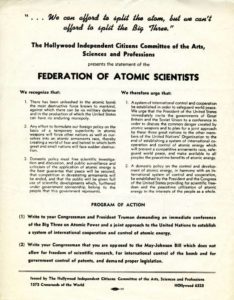
After the end of World War II, the younger scientists in the different installations of the Manhattan Project organized to educate their fellow citizens about the policy issues that would have to be dealt with now that nuclear weapons had been created. Groups were organized at the University of Chicago’s Met Lab; Los Alamos; Oak Ridge, Tennessee, where the US World War II uranium enrichment facilities had been built; and MIT’s Radiation Laboratory, where US wartime radar development was based.
The first nuclear policy issue on Congress’ agenda was how to manage post-war nuclear research and development.
The War Department (renamed the Defense Department in 1949) drafted a bill sponsored by Rep. Andrew May and Sen. Edwin Johnson. The younger atomic scientists feared the bill would result in even academic nuclear research being subject to military secrecy, but Oppenheimer, Fermi, and Lawrence signed a letter urging the bill’s rapid passage, creating a temporary split between the senior and younger scientists.
The influence of the atomic scientists on policy quickly faded as public interest subsided and the scientists returned to research and teaching.
The site organizations sent representatives to Washington to present their views. Within a month, they had established a small volunteer-staffed office and created the Federation of Atomic Scientists (later renamed Federation of American Scientists). Members of Congress and journalists were eager to meet the young articulate atomic scientists and learn about their concerns.
By the end of 1945, the May-Johnson bill was bogged down in controversy and an alternative bill emerged that put control of nuclear energy under a civilian-led Atomic Energy Commission. This was a success. The influence of the atomic scientists on policy quickly faded, however, after as public interest subsided and the scientists returned to research and teaching.
After the Soviet Union’s first nuclear test in August 1949, Washington hunted for who had revealed the secret of the bomb to the Soviets. The scientists responded that the key secret—that fission bombs could be made—had been revealed in the bombings of Hiroshima and Nagasaki. And a report commissioned by General Groves, the War Department’s overseer of the Manhattan Project, had also revealed how the United States enriched uranium and produced plutonium.[11] But US officials were not convinced: There must have been a mole among atomic scientists.
In 1950, Klaus Fuchs, who had been a member of the British delegation in Los Alamos during World War II, confessed to sharing information with the Soviets, including the design of the Nagasaki bomb. Nuclear scientists who advocated nuclear arms control agreements with the Soviet Union then came under heavy surveillance. The FBI’s investigative files on the Federation of American Scientists grew,[12] and the organization went into decline until it was revived in 1970 under the presidency of mathematician Jeremy Stone.[13]
Driving nuclear tests underground
With the development of the much more powerful thermonuclear weapons, atmospheric nuclear testing became a political issue. For high-yield thermonuclear tests, the United States moved its testing from Nevada to the Marshall Islands in the middle of the Pacific, while the Soviet Union moved its high-yield testing to the remote Arctic islands of Novaya Zemlya.
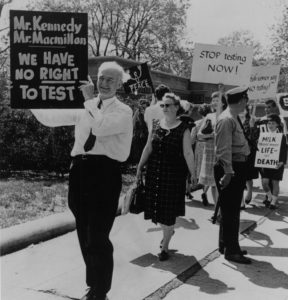
In 1954, winds blew the radioactive fallout from the US 15-megaton Bravo test on Bikini atoll in an unpredicted direction, contaminating an inhabited atoll, Rongelap, and a Japanese fishing boat, Lucky Dragon No. 5.
Fortunately, the residents of Rongelap were on its southern islands, where the fallout was 10 times less than on the northern islands, and were evacuated before they received lethal doses.[14] However, many children developed thyroid tumors, the population suffered additional health problems, and the atoll was eventually abandoned.
All this was successfully hushed up by the United States, but the Japanese fishing boat returned to Japan with its crew suffering from severe radiation illness, with one death resulting. Their fish was radioactively contaminated. A global furor resulted.
“I’d be a jellyfish and not Chairman of the Council of Ministers if I listened to people like Sakharov!”
—Nikita Khrushche
The high doses received by the Rongelap islanders and the Japanese fishermen were from local radioactive fallout. Roughly half of the radioactivity from Soviet and US high-yield nuclear tests ended up in the stratosphere, however, from which it slowly filtered down globally. A community effort in St. Louis collected 320,000 baby teeth and found easily measurable levels of strontium-90, a 30-year half-life radioactive fission product with a biological uptake similar to calcium.[15]
Two scientists, Linus Pauling in the United States and Andrei Sakharov in the Soviet Union, pointed out that huge quantities of radioactive carbon 14 also were being created by neutron absorption in atmospheric nitrogen. They estimated that millions of cases of serious health effects would result during that isotope’s long decay period (half-life of 5,600 years).[16]

In 1957, Pauling and his allies collected the signatures of 11,000 scientists on a petition calling for the end of nuclear testing in the atmosphere. In 1960, he was subpoenaed to testify before the US Senate Internal Security Subcommittee and questioned about whether his efforts were Communist-abetted.[17]
In 1961, at a meeting of Premier Khrushchev with the leadership of the Soviet nuclear program, Sakharov addressed Khrushchev to argue that most of the planned Soviet high-yield tests were unnecessary. According to Sakharov’s recollection, Khrushchev responded that that the tests were necessary to deter US nuclear threats and told Sakharov, “I’d be a jellyfish and not Chairman of the Council of Ministers if I listened to people like Sakharov!”[18]
Two years later, after the Cuban Missile Crisis, however, President John F. Kennedy and Khrushchev signed the Limited Test Ban Treaty, which banned nuclear tests everywhere but underground. That same year, Pauling was awarded the Nobel Peace Prize for his contribution. Sakharov’s efforts as an insider were relatively invisible to the outside world, but, in 1975, he too received the Nobel Peace Prize recognizing “his struggle for human rights in the Soviet Union, for disarmament and cooperation between all nations.”[19]
Limiting ballistic missile defense
In 1967, President Lyndon B. Johnson decided the United States would deploy defenses against incoming ballistic missiles. Johnson’s decision came despite his science advisors arguing that the system being proposed could easily be countermeasured and would provoke a Soviet nuclear buildup in response.[20]
Johnson was under political pressure at the time from the Republican presidential candidate, Richard Nixon, who claimed the Soviet Union was ahead in ballistic missile defense. Johnson later decided not to run for reelection because of the unpopularity of the Vietnam war, and Nixon got elected the next year.

The Nixon administration inherited the Johnson administration plan, which would have proceeded as planned but for two facts. First, in the absence of today’s homing technology, the long-range space interceptors were equipped with nuclear warheads 300 times more powerful than the bomb dropped on Hiroshima.[21] Second, the Defense Department decided to base the nuclear-armed interceptors in the suburbs of major US cities—starting with Boston, Chicago, Dallas, Detroit, Honolulu, New York City, Salt Lake City, and Seattle.
This deployment resulted in “not-in-my-backyard” (NIMBY) uprisings by suburbanites living near the proposed deployment sites who felt at risk of accidental nuclear explosions of the interceptor warheads.
Two senior government science advisors, Richard Garwin and Hans Bethe, decided to publish in Scientific American their arguments about the many ways in which a country like the Soviet Union, with the level of technology required to build intercontinental ballistic missiles, could equip them with decoys and other countermeasures to confuse or blind the radars guiding the interceptors.[22] Other scientists argued more generally that the deployment of defenses would provoke offensive buildups to still higher levels. In fact, that happened with the development of missiles with multiple independently targetable warheads in anticipation of missile defenses.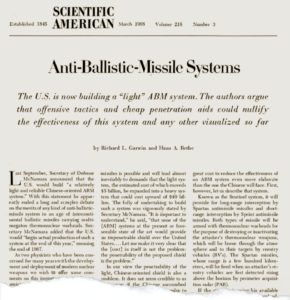
The Garwin-Bethe article made the issue accessible to members of Congress who had become interested in the issue because of the NIMBY uprisings. In response, the Nixon administration hastily moved the interceptors away from the cities and renamed the system “Safeguard.” But the Senate Foreign Relations Committee held hearings anyway, inviting the scientist critics as well as Defense Department officials to testify, and Congressional opinion shifted against the system.
It took a tie-breaking vote by Vice President Spiro Agnew, about a year into the new administration, to win Senate approval for funding to construct the first two interceptor sites. The Nixon administration saw the writing on the wall and decided to use the Safeguard system as a bargaining chip to be negotiated away with the Soviets.
The Soviet leadership came to accept the merits of an ABM Treaty, in part thanks to discussions between US and Soviet scientists.
The 1972 Anti-Ballistic Missile (ABM) Treaty with its 1974 protocol limited the United States and Soviet Union each to one interceptor site with 100 interceptors—a hardly significant number given that the each country was on its way to 10,000 nuclear warheads deployed on long-range ballistic missiles.
At first reluctant to agree to limitations on defensive systems, the Soviet leadership came to accept the merits of an ABM Treaty, in part thanks to discussions between US and Soviet scientists. Arguments similar to those made by Garwin and Bethe had circulated in discussions at Pugwash meetings in the mid-1960s and in bilateral meetings of the so-called Soviet-American Disarmament Study Group, organized by Harvard chemist Paul Doty in collaboration with Mikhail Millionshchikov, vice president of the Soviet Academy of Sciences. Shortly before his death in 1972, Millionshchikov drafted a report to the Academy crediting the ABM Treaty and other agreements to those informal discussions.[23]
The Comprehensive Nuclear Test Ban Treaty
The end of the US-Soviet nuclear arms race was made possible by a series of different events, including, in the United States, a grass-roots uprising calling for a “freeze” on the nuclear arms race in the early-1980s and, in the Soviet Union, the choice by the Soviet Communist Party’s Politburo of Mikhail Gorbachev as its next general secretary in 1985.
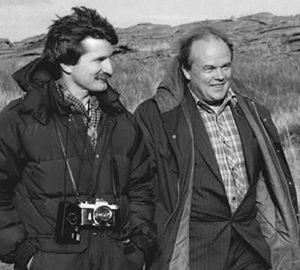
Gorbachev’s first nuclear arms control initiative was to declare a unilateral Soviet test moratorium to begin on August 6, 1985 (Hiroshima Day). His hope was to turn the Kennedy- Khrushchev Limited Test Ban Treaty into a Comprehensive Nuclear Test Ban Treaty by ending underground nuclear testing as well.
When the Reagan administration refused to join the moratorium, physicist Evgeny Velikhov, who had succeded Millionshchikov as vice president of the Soviet Academy of Sciences and was an arms control advisor to Gorbachev, searched for a way forward. In October 1985, at the centennial celebration of Niels Bohr’s birth in Copenhagen, Velikhov suggested to me the idea of inviting an outside group to verify that Soviet testing had stopped.
Thomas Cochran, a physicist with the US Natural Resources Defense Council, was interested and had the backing of the chairman of the Council’s board, and Aaron Tovish, then with Parliamentarians for Global Action, had found a seismologist, Charles Archambeau, who was able to recruit a team of seismologists from the University of California, San Diego to monitor the Soviet Semipalatinsk Test Site in Kazakhstan. After a first meeting in Moscow in May 1986, the effort moved quickly and, in July, the seismologists set up a monitoring station at the first of three geologically favorable locations around the test site.[24]
This initiative immediately excited test ban advocates in Congress.
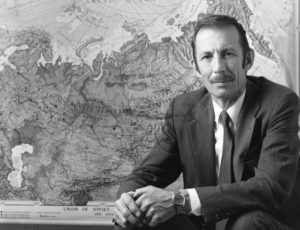
The effort to achieve a Comprehensive Nuclear Test Ban Treaty had failed two decades earlier because of Soviet unwillingness to allow as many on-site investigations of suspect seismic events as the United States was demanding. Now a new Soviet leadership was allowing a US group to establish in-country monitoring stations—unilaterally! Congress began to press the Reagan and then George H.W. Bush administrations for test-ban negotiations and finally, in 1992, imposed a moratorium on US nuclear testing as long as other countries—especially Russia—did not test.[25]
The initiative immediately excited test ban advocates in Congress.
Serious negotiations followed on a Comprehensive Nuclear Test Ban Treaty that was opened for signatures in 1996. To date, the treaty has been ratified by 177 states, but it has not yet come into force because Annex 2 of the treaty requires ratifications by 44 specific countries.[26] Among the nine nuclear-weapon states whose ratifications are required, only France and the United Kingdom have done so. China, Israel, Russia, and the United States have all signed, however, and the Vienna Convention on Treaties requires countries that have signed a treaty to comply with it unless they unsign. India and Pakistan have not signed but have not tested since 1998. North Korea, which also has not signed, has not tested since 2017.
